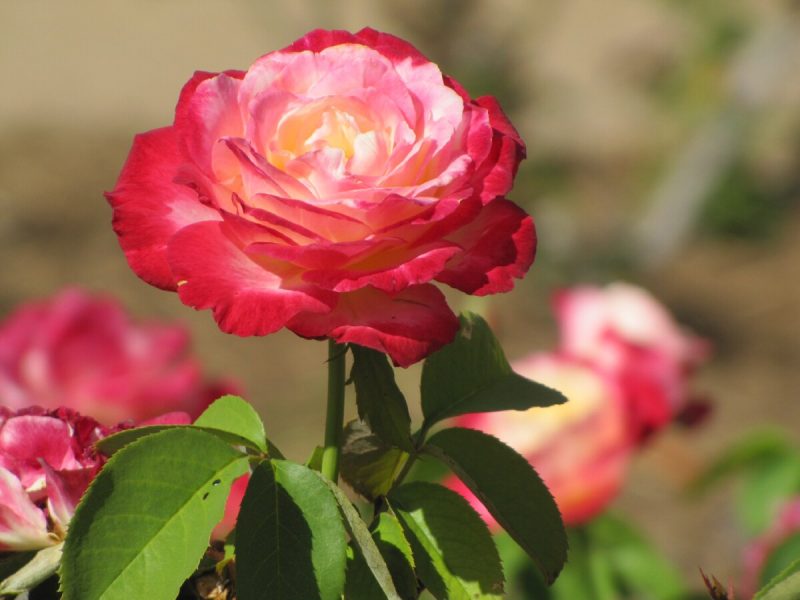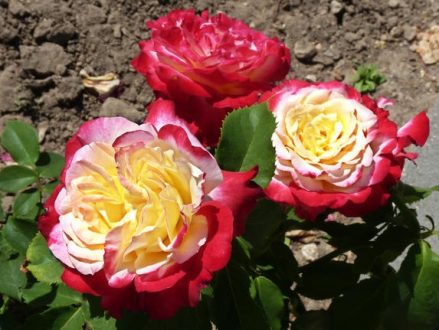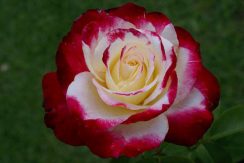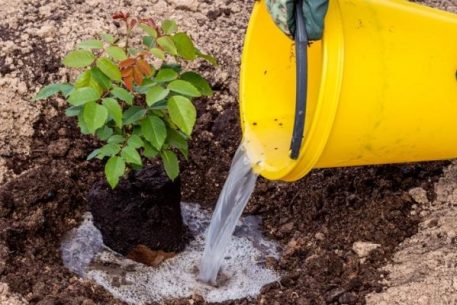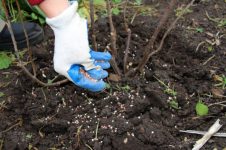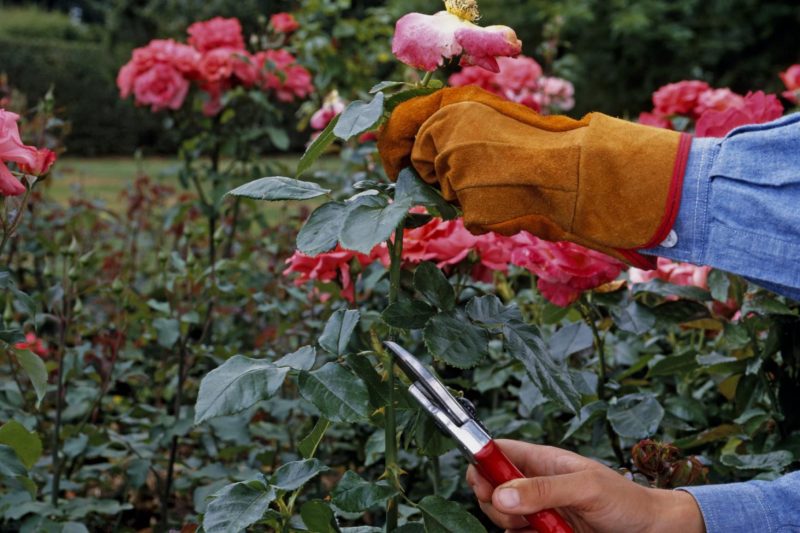Among the lushly blooming and vibrant colors, the Double Delight rose has long taken one of the leading positions. Florists give preference to the variety for the variety of colors that change throughout the flowering period of the tea-hybrid beauty, as well as for the unsurpassed aroma that fills even the most distant corners of the garden.
Material Content:
Double Delight Rose Selection History
The beautiful flower was the result of breeding work that took place in America. The significant date for obtaining the Double Delight variety, in the encyclopedia of roses described as contrasting with a long lasting aroma, is considered to be 1978. In Europe, a beautifully flowering plant was discovered only after 4 years, when Joseph L. Luna brought it from Vasco Island in California. It is not known for certain what parameters the rose owes its name to - a contrasting color or a combination of bright colors with a rich aroma. The universal recognition of the flower is confirmed by 30 awards won at various exhibitions around the world.
Description of the flower and features of the variety
The variety is represented by bush-shaped plants with erect shoots, the height of which can reach 120 cm. During the flowering period, observed twice during the summer, buds of the correct form slowly open. At this time, the color of the flowers, of which no more than three are formed on the bush, is gradually changing. Creamy white petals with a barely noticeable rim of a red hue acquire a raspberry color, against which a small creamy core contrasts. The diameter of the bud is 12-15 cm.
Outdoor landing
The Double Delight variety is a wonderful decoration of a cozy garden, for the successful cultivation of which it is necessary to approach planting responsibly.
Selection of seedlings
A healthy and high-quality planting material guarantees a lush and sprawling bush. When choosing a seedling, you need to pay attention to its roots, which must be powerful and branched. The presence of three smooth shoots and a sleeping kidney is also welcome. The optimal age of planting material is 1-2 years.
Site preparation
The queen of flowers needs a lot of diffused light, since the saturation of the colors depends on the exposure of the sun to the petals. The territory must choose the most ventilated. The soil on the site should be loose and well-drained. To improve the fertile layer, it is recommended to dig humus or compost for digging.
Technology and landing dates
The optimal time for planting in open ground falls at the end of May, when the threat of return frosts passes. At that time:
- At the selected site, digging holes with a distance of 1 m from each other and a depth of half a meter.
- Seedlings are placed in holes with a spread root system.
- Then the plants are sprinkled with soil in such a way that the root neck is deepened into the soil by 2 cm.
- At the end of the process, the soil in the near-stem circle is compacted and moistened.
If air holes remain around the roots, this can lead to the development of fungi, rotting and subsequent death of the flower.
Agrotechnics of cultivation and care
In order for the beautiful rose to caress the eyes for many years, it is necessary to properly care for the plant, observing all agricultural technical requirements for cultivation.
Watering
The key to successful cultivation is the correct irrigation system, in which the trunk circle should not dry out. But waterlogging the earth under the plants should not be. This can contribute to the development of a fungal disease - gray rot. Water procedures are carried out with warm, settled water at the rate of 15 liters per adult bush. A large volume of liquid will allow you to wet the soil to a depth of the root system of the culture.
Soil treatment
Since the rose needs loose soil, after irrigation or precipitation it is required to loosen the trunk circle, providing aeration and good water permeability. During loosening, weed vegetation is also removed. In order to save time, the ground under the bushes is covered with a layer of mulch, which also provides additional nutrition. When mulching, you can use peat or compost.
Fertilizing and fertilizers
To obtain lush and prolonged flowering, as well as strengthening immunity, the plant needs regular top dressing. With the arrival of spring heat, the bushes are fed with nitrogen-containing fertilizers, stimulating the growth of green mass. During the budding period, phosphorus and potassium are introduced into the composition of top dressings, which increase the productivity of plants. On average, during the growing season, 5–6 fertilizers are applied at an interval of 15–20 days.
Important! After flowering is complete, top dressing stops so that the roses can prepare for the winter season and tolerate frosts well.
Protection against diseases and pests
Like many beautifully flowering plants, the Double Delight rose requires attention from the grower, requiring comprehensive protection against a number of diseases and pests. Among the most common diseases, gray rot, powdery rose, black spotting and rust stand out. The main reasons for the development of pathogenic organisms are increased humidity both in the air and in the ground. In order to localize the foci of diseases, it is recommended to timely treat the bushes with fungicidal preparations.
Attention! In case of severe damage, spraying is carried out twice with an interval of 15-20 days, depending on the toxicity of the selected pesticide.
On shoots of roses pests can also be noted.Most often, flowers are attacked by the following harmful insects:
- Aphids are a sucking pest that feeds on leaf juice. At the first signs of the vital activity of an insect, it is recommended that the plant be treated with a systemic insecticide.
- Leafloader - caterpillars bring harm to the shoots, the result of which is twisted leaves. To cope with the enemy, you should spray the roses with a pesticide.
- Sawfly - in case of attack of this insect, plantings are subject to immediate spraying with an insecticidal solution according to the manufacturer's instructions indicated on the package. Https: //www.youtube.com/watch? V = lEeto1PpBjA
Pruning roses, preparing for winter
In order for plants to successfully winter, it is necessary to prune the flowers and properly cover them. After falling off the foliage that is being cleaned from the rosary, the shoots are shortened to 40 cm. The trunk circle is covered with a peat layer of 30 cm, which will protect the roots from frost. Next, over the bushes, frames are installed that are covered with spruce branches or special non-woven material. To prevent flowers from locking up, shelter should be built after the onset of cold weather.
The use of varieties in landscape design
Hybrid tea rose is often used in the design of garden areas and personal plots:
- in solitary landings on the background of bright green lawn;
- in flower and shrub ensembles;
- as decor elements of the central entrances to the house or gazebo;
- as a tapeworm in a round flower bed with stunted or ground cover plants.
Double Delight Rose is a spectacular decoration that will be the highlight of any landscape composition of the garden.


